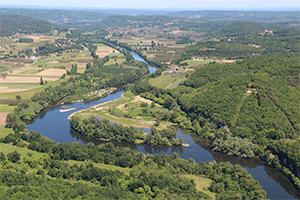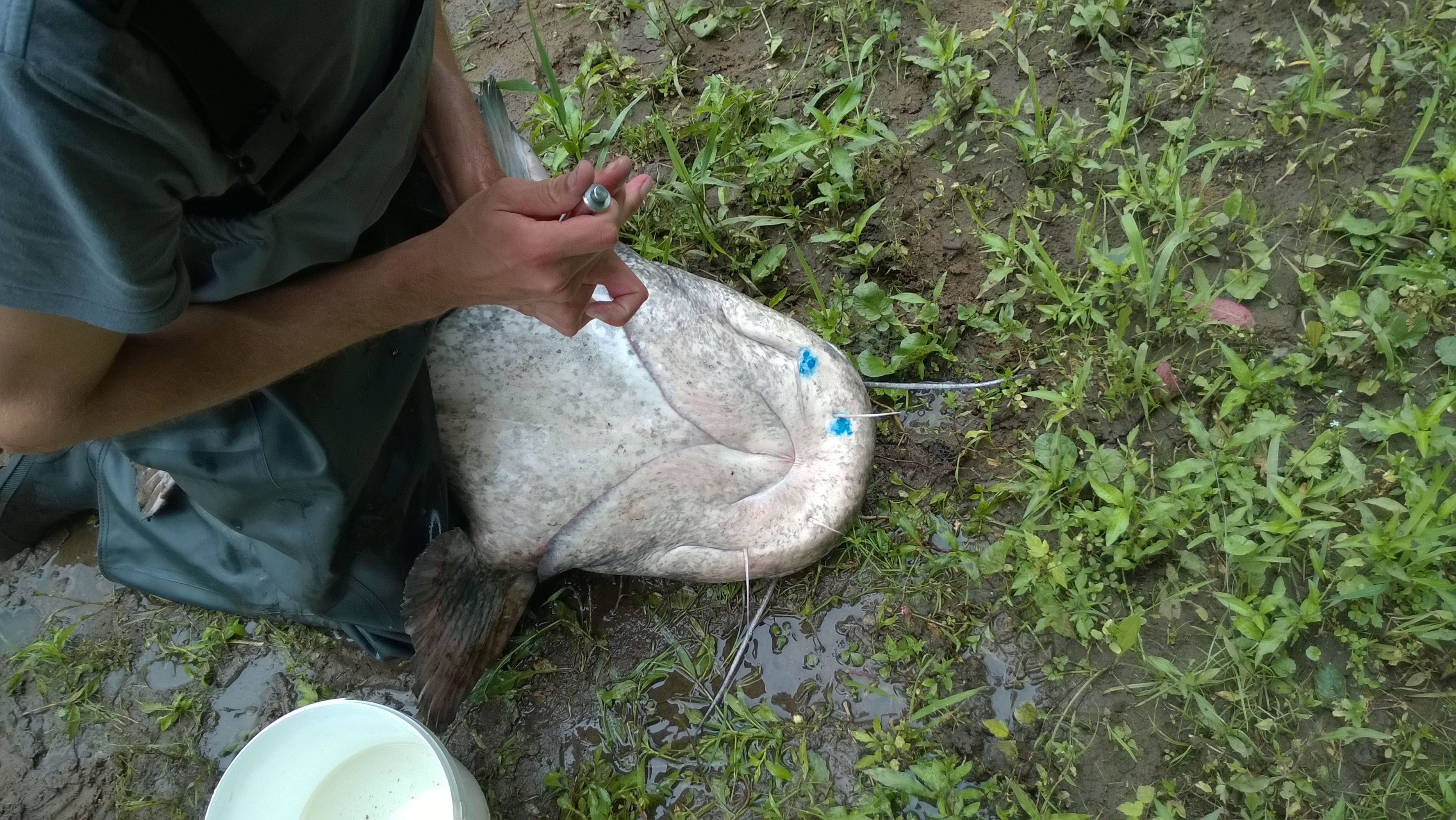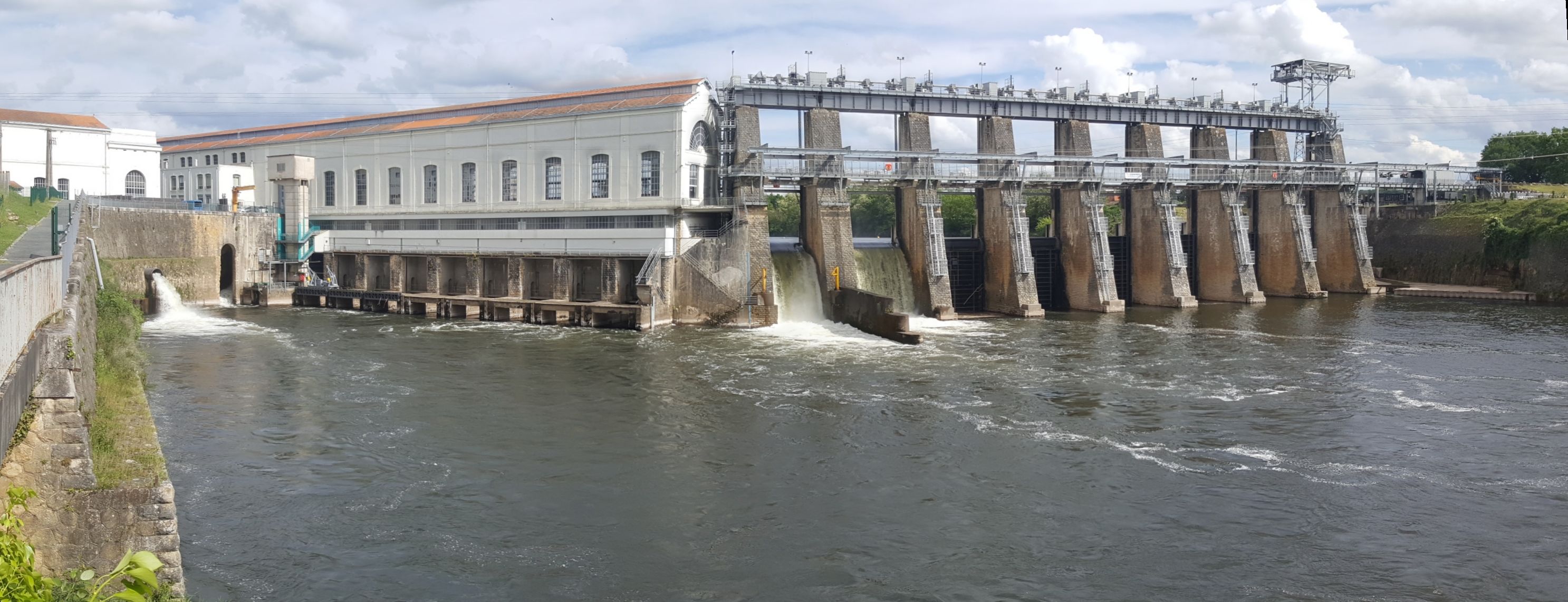Wels catfish (Silurus glanis) is the largest freshwater fish in Europe. Over the past 50 years, through deliberate or accidental introduction, this species – formerly native to eastern and central parts of the continent (particularly the Danube) – has colonised most of France’s major rivers. It was introduced in the Dordogne River at the end of the 1980s. Since then, it has developed and settled in almost half of the lower catchment area.
Its carnivorous diet and impressive size (up to 2m50 for 100 kg!) have raised questions about its impact on other fish, particularly migratory fish (salmon, shad, lamprey and eel), which are fragile species that already suffer from many pressures (dams, fishing, habitat degradation…). Faced with a lack of knowledge on the subject, EPIDOR (coordinating establishment for the Dordogne Basin Biosphere Reserve), launched in 2012 a scientific study on Wels catfish in order to learn more about this species, often subject of the most imaginative stories.
Although Wels catfish are not easily caught, in 6 years’ time more than 1400 specimens have been sampled by professional fishermen and volunteers. Among them, more than 1000 individuals were marked (tagged, banded or chipped) and more than 170 recaptures were identified and analysed. These recaptures provided some valuable information on growth (very variable according to the individuals), lifespan (catfish of 2m are on average 18 years old), behaviour (very sedentary and territorial) and population density (which seems rather high).
Each one of these Wels catfish were examined in order to know their height, weight, sex, and even to inspect their stomach content to specify their diet. The prey consumed are very diverse: fish, crayfish, molluscs, birds and even small mammals. Wels catfish have a very irregular feeding activity (70% of the catfish had an empty stomach when captured). They can survive for long periods without eating but some peaks can be observed in their feeding activity.
Predation of migratory species such as eel and shad is facilitated by the presence of dams that are difficult to cross. For salmon, it is even more obvious as predation from Wels catfish was only observed in these passages on the Dordogne River. Lamprey is a special case because it seems to be vulnerable at obstacles as well as in sectors without dams. All in all, for the vast majority of migratory fish, improving the efficiency of fish passages should remain a priority in order to reduce the time they are stuck at dams and thus to reduce their vulnerability to Wels catfish.
Meanwhile, it is also necessary to keep the Wels catfish population from growing. Informed of the situation, professional fishermen within the area began to take an interest in this abundant fish and developed their curiosity. Some culinary experiments were carried out with chefs, who concluded that Wels catfish have remarkable gastronomic qualities. Their flesh is white, firm, almost boneless and holds very well when cooked. This makes them suitable for various types of recipes. Sold at a very affordable price, local and organic, as well as 100% wild, this fish has raised an increasing interest among private restaurants and institutional catering. Some schools of the Dordogne region already took the plunge as they introduced Wels catfish served with organic vegetables in their canteen menu. This approach is part of a certified approach (called Ecocert) initiated by the Departmental Council. Let us hope that this interest will keep on growing, for the pleasure of gourmets. Bon appétit!

Pascal VERDEYROUX
Dordogne basin biosphere reserve – FRANCE
Pascal works for EPIDOR which is the coordinating structure of the Dordogne basin biosphere reserve.
He is specialised in migratory fish.
Related Posts
Migratory
fish

Ecological restoration

The Dordogne basin BR






